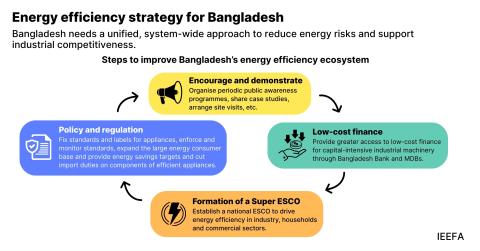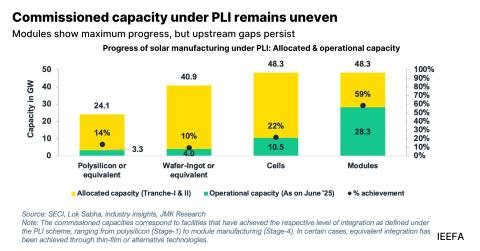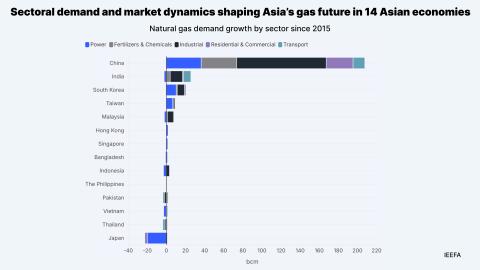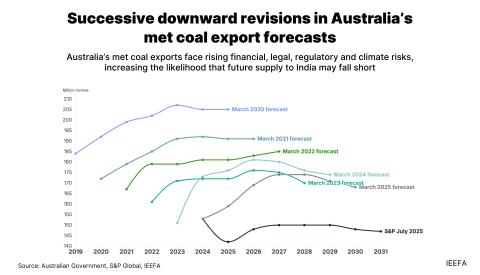Homes, not power plants, are key to slashing energy costs
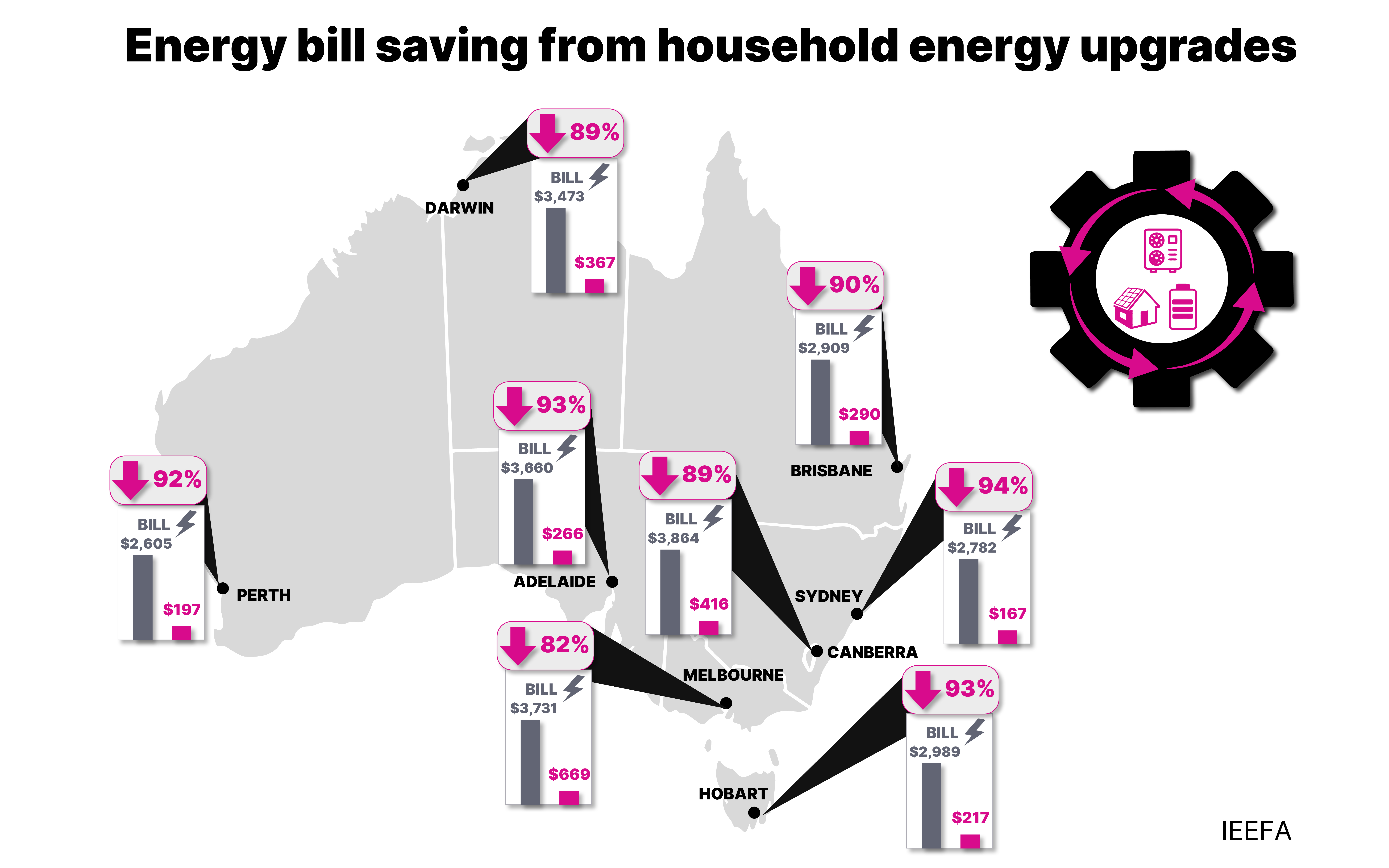
Key Takeaways:
Focusing on household solutions such as thermal upgrades, efficient electric appliances, solar, batteries and load-shifting is an effective strategy to halve residential energy bills.
Household energy upgrades benefit the broader energy system by mitigating gas supply gaps, managing peak electricity demand, and reducing greenhouse gas emissions.
A combination of improved minimum standards for household appliances and more comprehensive incentive schemes would be an effective way to accelerate uptake of household energy upgrades.
Retail pricing structures and network regulations need to be reviewed to ensure consumers can access the full value of household energy upgrades.
Embargoed till 9 July 2025 (IEEFA Australia): New independent modelling has shown that household energy upgrades could slash residential energy bills across Australia by 80 to 90% for a typical household.
While the policy debate on rising energy costs in Australia has largely focused on supply-side solutions, the modelling from the Institute for Energy Economics and Financial Analysis (IEEFA) reveals that focusing on household energy demand is a highly effective strategy to address Australia’s energy challenges. Household solutions such as thermal upgrades, solar and batteries, and smart, efficient electric appliances would save consumers money, while also benefiting the broader energy system by mitigating gas supply gaps, managing peak electricity demand, and reducing greenhouse gas emissions.
IEEFA’s modelling is presented in a new report, A focus on homes, not power plants, could halve energy bills. The report’s author, Jay Gordon, Energy Finance Analyst, Australian Electricity, says that by focusing on supply-side solutions as the only strategy to lower energy costs, the policy debate in Australia is largely ignoring the significant opportunities on the demand side.
“Rapid take-up of solar has driven daytime wholesale electricity costs to record lows, but a combination of rising fossil fuel prices, high network costs and an ageing generation fleet means Australian households continue to see rising energy bills,” says Gordon. “The response has been dominated by short-term fixes, such as one-off power bill subsidies, or even debates over slowing the rollout of large-scale renewables, in favour of alternatives that would actually increase power prices.
“These debates ignore the fact that our energy bills are not just a product of the price of energy, but also the amount of energy we are purchasing. And reducing the energy households consume from the grid – while using it more smartly – is one of the most effective ways to reduce energy costs.”
Gordon’s modelling shows that households that use gas in their homes are wasting significant amounts of energy to meet their basic needs, as are those in poor thermally-performing homes, and those who rely on inefficient electric appliances. Furthermore, while many Australian households now have rooftop solar, its full potential cannot be reached while energy demand is concentrated in the evening, or met by burning gas.
IEEFA’s report details how household energy upgrades, including efficient, smart electric appliances, rooftop solar and batteries, could slash energy bills by over 90% in many regions. These savings were calculated based on a typical, representative household in each capital city. Thermally efficient homes could unlock even further savings, and could take advantage of other solutions like pre-heating and pre-cooling.
Moreover, these upgrades could benefit other energy users, by cutting gas demand in constrained periods, and reducing peak electricity demand on the grid. This can result in lower generation costs and, with the right pricing structures and regulations, could lower network costs.
These upgrades would also offer a particularly low-cost way to cut Australia’s greenhouse gas emissions. As well as seeing overall residential energy consumption fall, they would see electricity consumption shifted to periods where solar is abundant and the emissions intensity of electricity production is lowest.
Many of these measures are cost-effective for households today. However, uptake of even the lowest-cost upgrades is lagging. Many households lack the time or ability to engage in the complex economic decision-making around energy use. And renters and those on low incomes are often unable to access most energy upgrades entirely.
“Improving minimum standards for household appliances is a logical policy step that would benefit all consumers,” says Gordon. “Australia has an existing appliance standards program – but it’s time to update and expand it to accelerate the uptake of efficient, flexible electric appliances.”
Meanwhile, broad-based incentive schemes could assist in overcoming the barriers that currently deter take-up of these upgrades.
“Financial incentives play a critical role to reduce the upfront cost hurdle for consumers and scale up the industry capacity to deliver upgrades,” says Gordon. “However, the current approach to incentives is piecemeal. While Victoria and New South Wales have successfully implemented broad incentive schemes, there is a case for more comprehensive national programmes.
“The introduction of federal battery rebates was an important step – but there is a missed opportunity to expand this to other energy upgrades that also cut bills, cut emissions and support the grid.
“Our findings show that deep energy bill reductions can be enabled through the household energy upgrades we recommend in our report. Household energy upgrades could form the core of a federal and state government strategy to halve household energy bills.”
Read the report: A focus on homes, not power plants, could halve energy bills
Media contact: Amy Leiper, ph 0414 643 446, [email protected]
Author contacts: Jay Gordon [email protected]
About IEEFA: The Institute for Energy Economics and Financial Analysis (IEEFA) examines issues related to energy markets, trends, and policies. The Institute's mission is to accelerate the transition to a diverse, sustainable and profitable energy economy. (ieefa.org)



